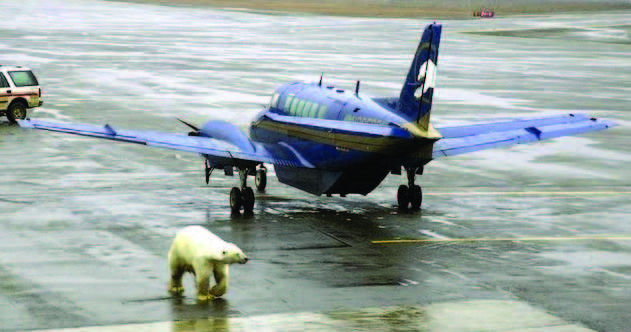RDC weighs in on Arctic policy commission report
A high level of regulatory uncertainty is threatening Alaska's ability to develop its vast energy and mineral resources in the Arctic, warned RDC Executive Director Rick Rogers in comments on the Alaska Arctic Policy Commission’s Preliminary Report.
Rogers noted Alaska holds an immense wealth of natural resources, including the Outer Continental Shelf (OCS), the National Petroleum Reserve-Alaska, the Coastal Plain of the Arctic National Wildlife Refuge (ANWR), and the Point Thomson oil and gas field.
In his letter to the state commission, Rogers pointed out Alaska has decades of experience in responsibly developing Arctic resources, including the vast North Slope oil fields and Red Dog, one of the largest zinc mines in the world.
“ANWR holds immense potential, and exploration in the OCS, if only allowed by regulators and the courts to move forward, has great potential for significant new production,” Rogers said. “Such new production is vital as the Trans-Alaska Pipeline is running at 25 percent of its original design capacity.”
Rogers noted that mineral exploration continues in lands adjacent to Red Dog with the promise of decades of additional production. Mineral exploration at the Ambler Mining District, Nome, and elsewhere bode well for future mineral developments and benefits comparable to Red Dog, Rogers said.
“Without the development of our Arctic resources, Alaska is exposed to most of the risk with few of the rewards,” Rogers said. He pointed out that Russian exploration and production giant Rosneft recently approved moving forward with exploration some 50 miles from Shell’s Burger prospect in U.S. waters. He also noted that reduction in summer sea ice is resulting in increased international vessel traffic in the Arctic.
“An industrial presence in the Alaska Arctic resulting from exploration and development of offshore leases brings with it resources for spill response and search and rescue capacity in the region,” Rogers explained. “However, a worst-case scenario for risk vs. benefits arises if there is no new development in the Alaska Arctic while prospects in the Russian Arctic and elsewhere move forward,” Rogers warned. “In spite of dozens of wells previously drilled in the Alaska OCS without incident, approval to move forward on Alaska offshore exploration remains elusive.”
Regulatory uncertainty is a human caused condition and can be addressed, Rogers said. “It would be naive to suggest that the Alaska Arctic Policy Commission could single handily eliminate regulatory uncertainty, however, it is well positioned to influence this regulatory uncertainty by providing a unified Alaska voice that emphasizes the decades of experience and success Alaska has in responsibly developing its natural resources, and the need for clear, consistent, and durable policies so development can move forward without undue delay,” Rogers said.
“Care should be taken in avoiding conflicting policies that may serve to add to an already uncertain regulatory climate,” Rogers added. “The commission would do well to focus on Alaska’s expertise and success in developing Arctic resources.”
Rogers listed numerous recommendations to achieve a more clear and concise Arctic policy statement, including cross-checking all proposed policies with existing statewide Alaska policies to avoid inconsistencies. “If the policies are in conflict, which one will trump the other, and what justification is there for policies in the Arctic that conflict with statewide policies established over the 55 years since statehood?” Rogers asked.
Terms such as “ecosystem management” should be clearly defined to avoid significant ambiguity and differing interpretations, Rogers suggested. The commission should also eliminate inconsistencies in its preliminary report, he said.
Rogers conceded there are formidable challenges to developing Arctic resources, but warned that a strict pre-cautionary approach which demands all questions be answered and data gaps filled before development moves forward would equate to a moratorium on development while endless studies are conducted. He said if such an approach was followed in the 1960s and 70s, the North Slope oil fields would never have been developed and Alaska’s economy today would be half its size.
Rogers said serious consideration and accommodations need to be given to traditional uses and subsistence, research efforts must be encouraged and advanced, and key infrastructure developed. “All of this can occur as part of the process of advancing responsible resource development, as was done when Americans embarked on the deliberate, but responsible development of the vast energy resources of the remote and challenging North Slope, more than a generation ago,” Rogers said. “Research and infrastructure expansion occurred simultaneously with exploration and development activities.”
Full comments online at akrdc.org.

A polar bear explores the tarmac at the Barrow airport.
Return to newsletter headlines